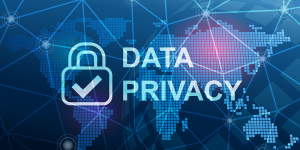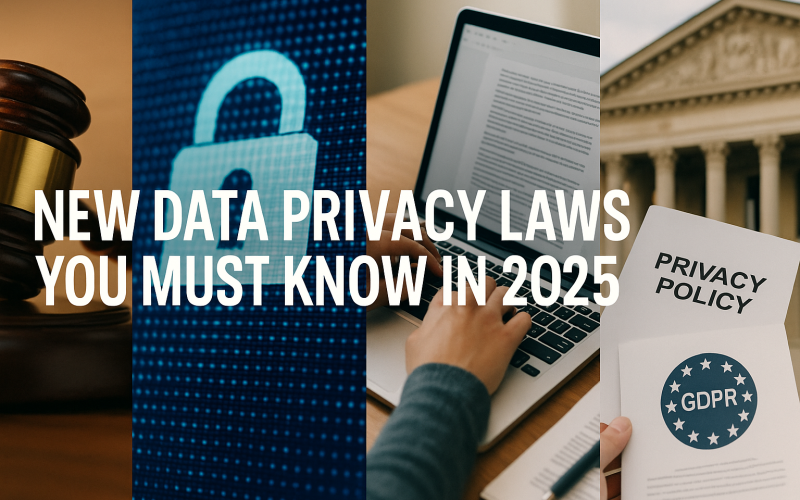Introduction
Personal data has never been more valuable—or more regulated. In 2025, governments on every continent are rolling out fresh rules that redefine how companies collect, store, and share information. These 2025 data privacy laws aim to give people stronger control and force businesses to handle data with care. Whether you run a small online shop or a global cloud service, understanding these changes is no longer optional. This article breaks down the key regulations, explains why this year matters, and shows simple ways to stay compliant without slowing innovation.
What Are Data Privacy Laws?
Data privacy laws set legal limits on how organizations use personal information. They outline consent rules, breach-reporting timelines, user rights, and fines for violations. Because technology moves fast, lawmakers update these rules often. The new wave arriving in 2025 focuses on transparency, cross-border transfers, and tougher penalties for repeat offenders.
Why 2025 Is a Pivotal Year

Several landmark statutes reach full force in 2025, while others expand their scope or raise fine ceilings. The result is a patchwork that touches almost every firm that handles customer or employee data. Ignoring these shifts risks steep fines, class-action suits, and brand damage.
Why They Matter in 2025
Global digital commerce and AI adoption have exploded. Companies now collect vast amounts of customer data through social media, mobile apps, and connected devices. Privacy breaches can lead to financial losses, reputational damage, and fines.
For individuals, stronger privacy rules mean greater control over personal data and fewer unwanted solicitations.
Key Principles of Modern Privacy Laws
Most data privacy regulations share core elements:
• Transparency: Disclosing what data is collected, how it’s used, and who it’s shared with.
• Consent: Obtaining clear, informed permission before processing personal data.
• Data Minimization: Collecting only the information needed for a specific purpose.
• Access and Correction: Allowing individuals to view, correct, or delete their data.
• Security: Implementing appropriate measures to protect data from breaches and unauthorized access.
United States: State-by-State Changes
The United States still lacks a single federal privacy statute. Instead, individual states fill the gap. Five fresh acts—covering Utah, Colorado, Tennessee, Florida, and Montana—take effect in 2025. Each law mirrors core GDPR concepts like user access rights and data protection assessments but diverges on age thresholds and opt-out buttons. The state privacy law 2025 compliance landscape also shifts in California, where the updated California Privacy Rights Act raises revenue thresholds tied to inflation and tightens rules for automated decision-making. Firms active across states must map out which provisions overlap and where stricter local rules apply.
European Union: Data Act and Beyond
The EU’s Data Act 2025 goes live on 12 September 2025 and sits alongside the GDPR. While GDPR deals with personal data, the Data Act covers any connected-device data—think smart thermostats or industrial IoT sensors. Companies must provide “data access-by-design,” allow easy switching between cloud providers, and share certain data with users or third parties under fair terms. Non-compliance can draw fines up to two percent of global turnover, in addition to GDPR penalties.
India: Digital Personal Data Protection Rules
India’s Digital Personal Data Protection Act became law in 2023. The detailed rules that give it teeth, known as India DPDP rules 2025, are expected early this year. They clarify consent templates, parental controls for minors, and cross-border transfer whitelists. India also plans a dedicated Data Protection Board to levy fines reaching $30 million for serious breaches.
China: Cybersecurity Law Amendments
Beijing released a second draft of China cybersecurity law amendments 2025 that strengthen existing rules. Key updates introduce graded fines based on incident severity, tougher roles for network operators, and flexible treatment for minor lapses. Foreign firms hosting Chinese user data must undergo new security reviews when exporting information. Penalties jump to five percent of annual revenue for critical infrastructure operators, making compliance a board-level priority.
Brazil and Latin America
In Brazil, lawmakers are debating bills that extend LGPD principles into AI transparency and data localization. Proposed measures include mandatory algorithmic impact reports and local storage for sensitive information. Neighboring countries such as Chile and Colombia are drafting similar statutes, creating a regional trend toward strict oversight.
Major EU Privacy Regulations in 2025

The European Union remains a global leader in privacy law. In 2025, several updates and new rules come into force.
General Data Protection Regulation (GDPR) Refinements
The GDPR has been in effect since 2018. In 2025, the EU enacts refinements to reduce red tape for small businesses while tightening rules around AI. Companies using AI to profile users must document model explainability and fairness tests. GDPR fines can reach 4% of global annual revenue or €20 million, whichever is higher.
Digital Services Act (DSA)
Effective in mid-2025, the DSA imposes new rules on online platforms hosting third-party content. Platforms must be transparent about algorithms that recommend content, allow users to appeal automated decisions, and remove illegal content within 24 hours of notification. Data privacy teams need to audit data flows to comply with DSA’s transparency obligations.
European AI Act
The EU AI Act classifies AI systems by risk. In 2025, high-risk AI—used in healthcare, transport, or law enforcement—must undergo mandatory risk assessments, bias checks, and human oversight. Developers must maintain detailed documentation and publicly share performance metrics. Any breach of AI-related rules can lead to heavy fines under the AI Act and GDPR interplay.
How Businesses Can Comply

Navigating this evolving privacy landscape requires proactive strategies.
H3 Conduct a Data Audit and Mapping
Identify all personal data you collect, process, store, and share. Create a data inventory that notes sources, flows, and retention periods. This step lays the groundwork for compliance by revealing gaps and risks.
Update Privacy Policies and Notices
Ensure your privacy policy clearly describes data collection purposes, sharing practices, and user rights under new laws. Use plain language so even non-experts understand how their data is used.
Implement Consent Mechanisms
Obtain explicit, informed consent before processing personal or sensitive data. Use clear opt-in checkboxes that are not pre-checked. Record consent timestamps and records to demonstrate compliance.
Appoint a Data Protection Officer (DPO)
If required by law—such as under GDPR or DPDPA—appoint a qualified DPO to oversee data protection activities. The DPO advises on compliance, conducts audits, and acts as a point of contact for regulators.
Impacts on Businesses
Companies large and small face rising costs in legal review, data-mapping, and employee training. Cloud contracts will need fresh clauses to reflect the EU Data Act’s portability mandates. Marketing teams must adjust consent banners for each U.S. state. Supply-chain partners demand proof of compliance before sharing analytics dashboards. On the bright side, clear rules can build customer trust and reduce breach fallout.
Steps to Prepare for Compliance

First, audit all personal and device-generated data. Identify where it lives, who accesses it, and how long you keep it. Second, update privacy policies so they speak in plain language at a tenth-grade reading level—many laws require clarity. Third, embed automation tools that honor global opt-out signals and region-specific consent. Fourth, negotiate vendor contracts with shared liability clauses. Finally, schedule tabletop exercises to test your incident-response playbook under the stricter timelines many 2025 acts demand.
Future Outlook for Privacy Regulation
Expect regulators to focus on artificial intelligence explainability, children’s data, and cross-border transfers. Fragmentation remains likely, yet baseline rights—access, correction, deletion—are converging worldwide. Industry bodies predict over half of all nations will have comprehensive privacy statutes by 2030, pushing businesses toward privacy-by-design at every development stage.
Conclusion
New data privacy laws in 2025 raise the bar for transparency, user rights, and security. From the EU’s Data Act to emerging U.S. state statutes, each rule demands clear consent flows, robust breach response, and careful data sharing. Companies that act now—auditing assets, updating notices, and training staff—will not only avoid fines but also gain customer trust in an age where privacy equals brand value. Staying proactive keeps you ahead as the global rulebook grows more detailed each year.
Call to Action
Do not wait for an enforcement letter. Start your compliance audit today, update all privacy notices before regional deadlines, and subscribe to a trusted privacy-law tracker for real-time alerts. Protect user trust, avoid costly fines, and turn privacy excellence into a market advantage—begin now.












